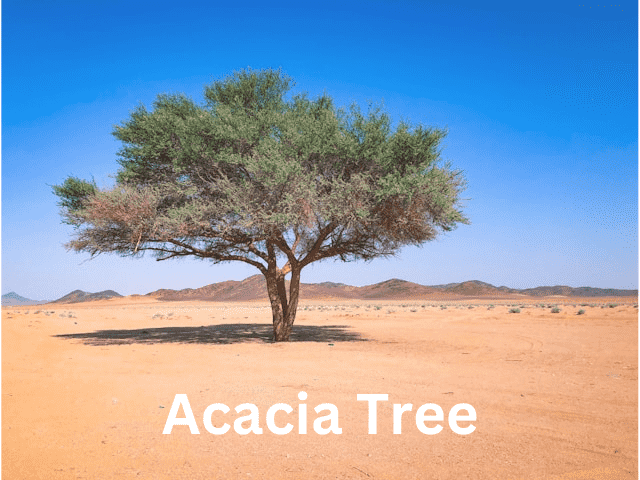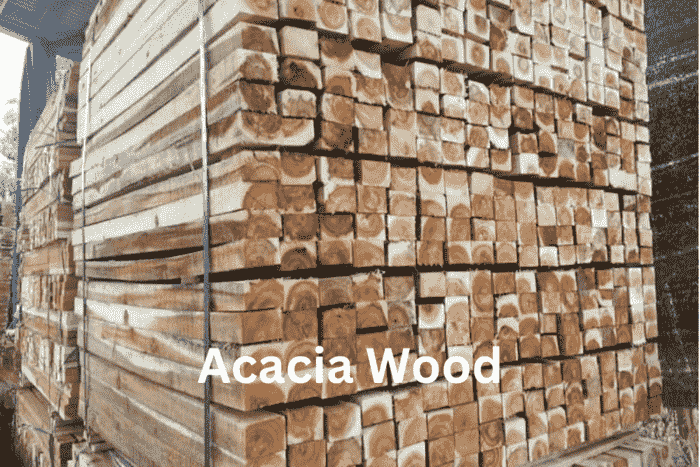Acacia wood has recently become a popular choice for home interiors, furniture, household items, and even home decor. They are known for their strength, durability, and unique appearance, which set them apart from other kinds of woods.
But is it only what meets the eye? Is Acacia wood really good? Is it difficult to take care of? I understand that choosing the right kind of wood can be difficult since so many options are available. So, to make it easier for you, let’s discuss this in detail.
Acacia Trees

Genus: Acacia
Family: Mimosaceae
Acacia is a group of highly adaptable plants, shrubs, and large trees native to Australia and Africa, but also found across the world, including the United States, Europe, and southern Asia. In Australia, it is commonly known as Wattle. According to the Australian National Botanic Gardens, there are nearly 1,350 species of Acacias worldwide, with the majority, around 1,000, found in Australia.
One of the most noticeable features of acacia trees is its umbrella-like appearance. Most acacia trees have oval leaves with small leaflets (like ferns) on both sides of the stem while some other species of acacia trees have longer flattened leaves.
Acacias can strive in any climate and environment due to the thorns that line their branches, for which they are often also called thorn trees. The thorns along with the pungent smell of the wood help keep desert animals away so that the trees can conserve water.
Acacia trees have twisted branches that can go up really high. They bear small fragrant flowers that are colored white and shades of yellow and sometimes even red.
Acacia trees often play a significant role in the African and Australian cultures. In Africa, these trees are often considered sacred and in Australia, they resemble unity and ‘National Wattle Day’ is celebrated on the 1st of September every year to welcome the season change.
What is Acacia Wood?
Acacia wood is an extremely durable, unique, and versatile hardwood that comes from Acacia trees. It is one of the hardest woods out there, even harder than Pine, Oak, and Hickory.
With so many species of acacia trees, there are many kinds of acacia wood having slightly different appearances. Some of the most common kinds of acacia woods used today are the Hawaiian Koa, the Australian/Tasmanian Blackwood, the Northern black wattle, the Mimosa, the small Philippine Acacia, the Jam wattle, etc.
What color is Acacia Wood?
Acacia wood is known for its rich color. Its color ranges from light golden to dark brown. As they age, they catch on a more prominent reddish shade of brown hue. Acacia also happens to be an easy wood to stain. So, you can very easily change the color from lighter to darker shades as per your preference.
Where does Acacia wood come from?
Acacia wood comes from Acacia trees, which are native to tropical and subtropical parts of the world like Australia, Africa, Asia, and some parts of America.
Scents of Wood Cedar in Acacia
Cedar in Acacia by Scents of Wood is an intoxicating perfume that captivates the fresh, woody fragrance of acacia beautifully. With base notes of Amber, Ginger, and Cinnamon, you are bound to feel like being embraced by a spicy scent on a warm summer evening!
What does the Acacia wood look like?
Acacia wood comes in an array of colors, starting from golden to auburn and is usually accompanied by broad grain patterns, which could be straight or wavy and irregular.
What are the uses of Acacia wood?
Acacia wood has a wide range of uses due to its durability and versatility. Some common uses include:
- Furniture: Acacia wood is often used in furniture production due to its durability and attractive grain patterns.
- Flooring: It’s a popular choice for hardwood flooring because of its strength and resistance to wear and tear.
- Cabinetry: Acacia wood is utilized in the construction of cabinets and countertops due to its durability and resistance to moisture.
- Construction: It’s used in various construction applications such as beams, posts, and decking due to its strength and resistance to decay.
- Musical Instruments: Acacia wood is sometimes used in the construction of musical instruments such as guitars and ukuleles for its resonance and stability.
- Kitchenware: Acacia wood is used to make cutting boards, serving utensils, and other kitchenware due to its natural antibacterial properties and resistance to moisture.
- Decorative Items: It’s often used to make decorative items such as bowls, vases, and picture frames due to its beautiful grain patterns.
- Outdoor Furniture: Acacia wood is suitable for outdoor furniture due to its resistance to weathering and rotting.
Overall, acacia wood is prized for its strength, durability, and aesthetic appeal, making it a popular choice for a wide range of applications.
Advantages & Disadvantages of Acacia Wood
Advantages
- Durability: Acacia is a very hard and dense wood. Not only that, they also have anti-fungus and anti-bacterial properties, which makes it a popular choice for both indoor and outdoor projects. With proper care, acacia wood products will last a long time.
- Versatility: Acacia is a highly versatile wood that is used for various applications including furniture, flooring, decking, kitchenware, etc.
- Water-Resistant: Acacia can withstand moisture for longer period of time than other types of woods. It is especially water-resistant if it is pre-treated or if a protective coat is applied.
- Natural Oils: Acacia wood contain natural oil, which keeps it safe from insects, pests, and even fire. It also helps prevent shrinking and cracking of the wood.
- Sustainability: Acacia trees usually grow much faster than other hardwood, which makes acacia an eco-friendly option.
Disadvantages
- Costly: Acacia is definitely on the pricier end. It will cost you around $8 per foot of Acacia wood.
- Not Weather-Resistant: Although water-resistant, acacia is very sensitive to high temperatures and continued rain. Fluctuations in weather can therefore cause warping or splitting, eventually damaging the products.
- Maintenance: Acacia is more prone to drying than many other kinds of wood and therefore, extensive maintenance is required. Not only do you have to clean them with wet cloths, occasionally you will also have to oil them.
Acacia wood durability
Acacia wood is one of the most durable hardwoods in the market today. The US Navy used to use acacia for their ships and it bore them great results. It is a hardwood with excellent resistance to wear and tear. If maintained properly, acacia products will last up to decades.
Is acacia wood good for cutting boards?
Yes. Acacia wood is strong, anti-microbial, and dense, which makes it ideal for cutting boards. Hard plastic cutting boards are often harsh on knives, which impacts their longevity. Acacia wood makes strong cutting boards, which is perfect for regular use.
Is acacia wood good?
Yes. Overall, provided its longevity, unique appearance, and versatility, acacia is a good choice for various applications. Its anti-fungus and anti-microbial properties are just a bonus, making it a suitable wood for many projects.
Is acacia wood good for outdoor furniture?
Yes. Acacia wood is extremely resistant to decaying and is water-resistant, making it a great choice for patio or poolside furniture. However, continued exposure to the sun and water could be damaging, in which case, you can cover the furniture with a plastic wrap.
Is acacia wood waterproof?
Although resistant to water, acacia wood is not completely waterproof and prolonged exposure to moisture can eventually damage it.
How to clean acacia wood?
To keep your acacia wood products and furniture clean, you have to clean it regularly. Use a dry cloth or brush with soft bristles to clean it on a regular basis. On a weekly basis, clean the furniture thoroughly with warm water and dish soap solution.
Clean again with clean water and you can either dry off using a fresh cloth or just air-dry. To keep your furniture, especially tables neat, it is recommended to use coasters and table mats to avoid spills.
Conclusion
Choosing acacia for your projects or furniture could be a big investment, but if you ask me, it is a worthwhile one. True, it will cost you a little more than other woods, but you would not also need to worry about them for many years to come.
With proper maintenance, you can have great results with acacia, whether you are going for a rustic output or a chic, modern one.











Leave a Review